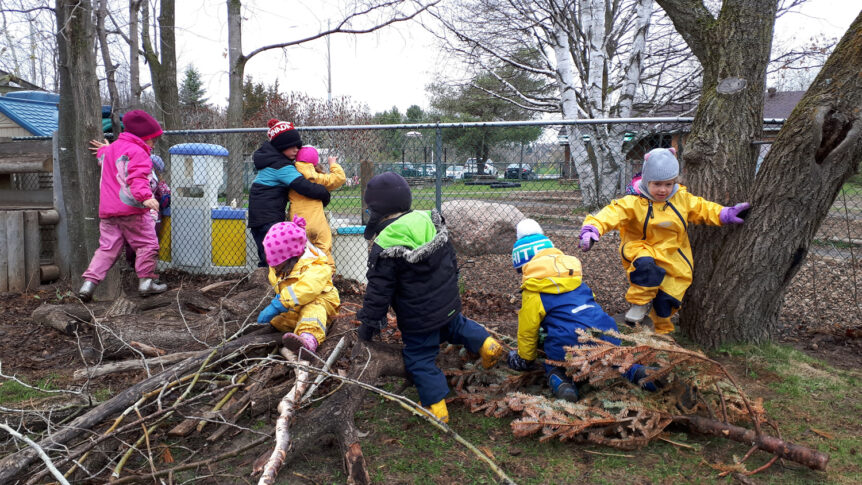A stick, a branch, a log. These parts of trees that once stood tall and mighty are some of the natural loose parts our Kindergarten children have been drawn to over the course of our time together. While the children are very unique and have a unique array of skills, ideas and interests on any given day, the use of these three things has remained constant for as long as I can recall. After observing the children in the forest one particular day, I really considered this. The play, the learning, the wonder, the experimentation and the joy (and the sheer amount of these), truly amazed me the more I focused on the children’s experiences in the program that involved a stick, a branch or a log. Wherever there has been collaboration, a personal success, an exciting new idea, an invention or an “aha” moment, a stick, a branch or a log was likely part of the equation.
That day, I had observed as three boys collected sticks and small branches of varying sizes and shapes and began to build a “birdhouse”. They sorted out each person’s role in the construction before getting to work. Heavier sticks were used as hammers to tap smaller sticks that would become walls and fences into the ground.
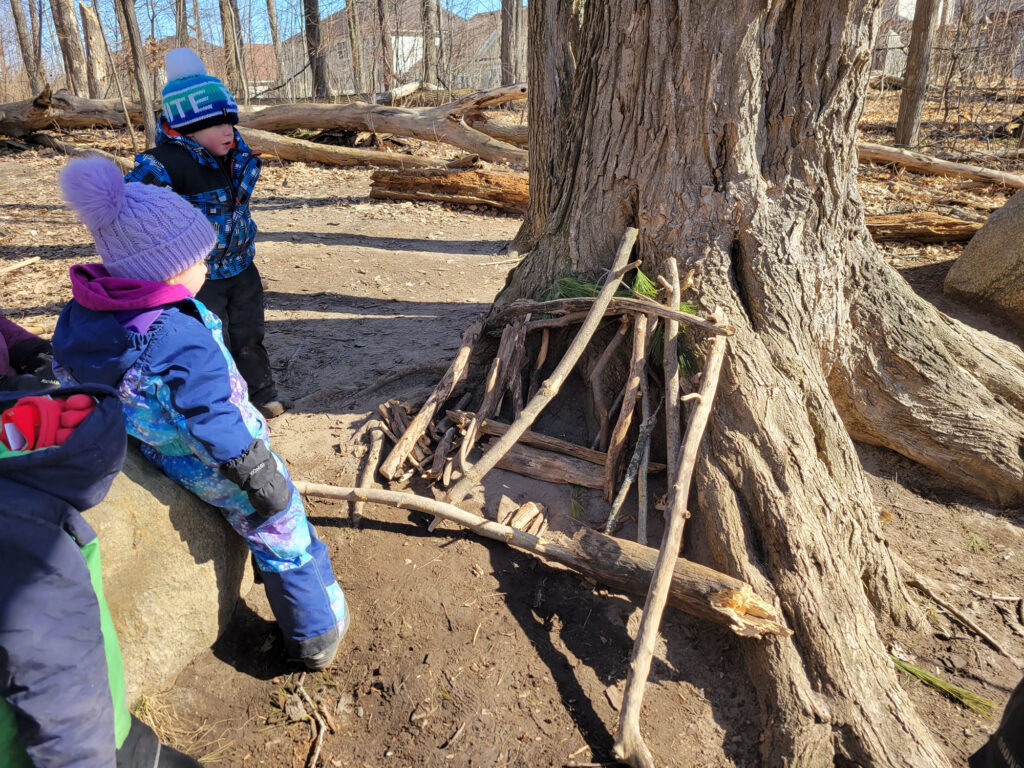
They traded ideas about how to create a backyard, a roof and even a kitchen within their small but sturdy creation. Just as their project was nearing completion, they happened upon some pine and cedar branches that someone had discarded in the woods. “Oh Wow, look what I found!” was the excited call heard by all. Most of the group gathered to see the treasure of evergreen branches, each child coming up with a plan for one or more of the branches. Our three builders went back to work creating another home. This time, they used a tree as a lean-to to plan, try, fail and try again to create a beautiful “squirrel house”. The other children were intrigued as the house took shape and offered to help with its construction “YA Sure!” was, of course, the reply. Each child had a role to play then in how the remainder of the structure would take place. Watching, I noticed how the children sorted through the different branches after their friends dragged them to a location close by. It was clear that they knew what they were looking for and not settling for just any branch. The end result, not that that matters in forest school, was a rather beautiful, sturdy and functional shelter, created by the hands and minds of much of the group for their forest dwelling friends.
I see the children in this manner, with branches, sticks and logs, daily. I’m not sure what about this particular day got me recalling and thinking deeply about how much these loose natural parts play a part in their daily lives within the program but I think it was maybe the moment of excitement, the “Oh Wow, look what I found!” moment that struck me. That these branches were useful to the children and that they recognized this at first glance was striking to me.
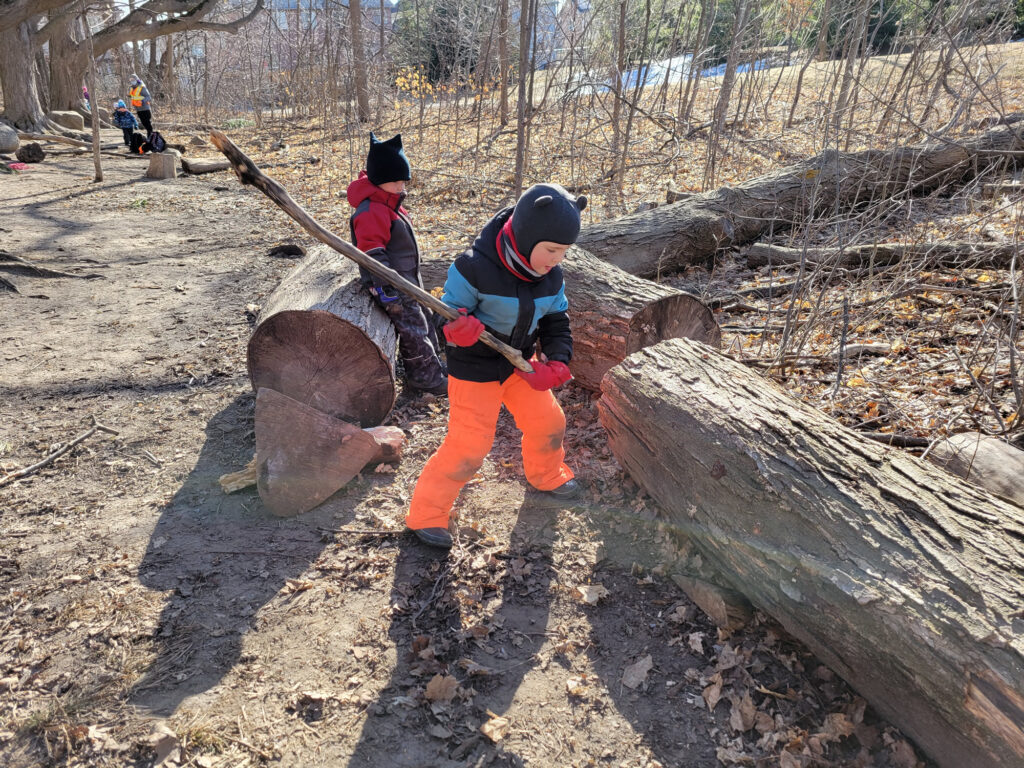
When I started thinking about their work together over the past few months, sticks, branches and logs, I noticed, have been really at the core of their learning. No matter “what” the learning or “how” the learning has been occurring. Sticks helped us get closer to nature as we used them to pick up worms we weren’t comfortable touching at first to move to safe places in the garden, they’ve been tools for drawing and printing messages in snow and dirt, they’ve been our first choice as stirring and mixing utensils in our mud kitchen even when spoons were available and sticks have been the beginnings of our fires, both real and make believe where we come together to eat imaginary food from the mud kitchen and tell stories together.
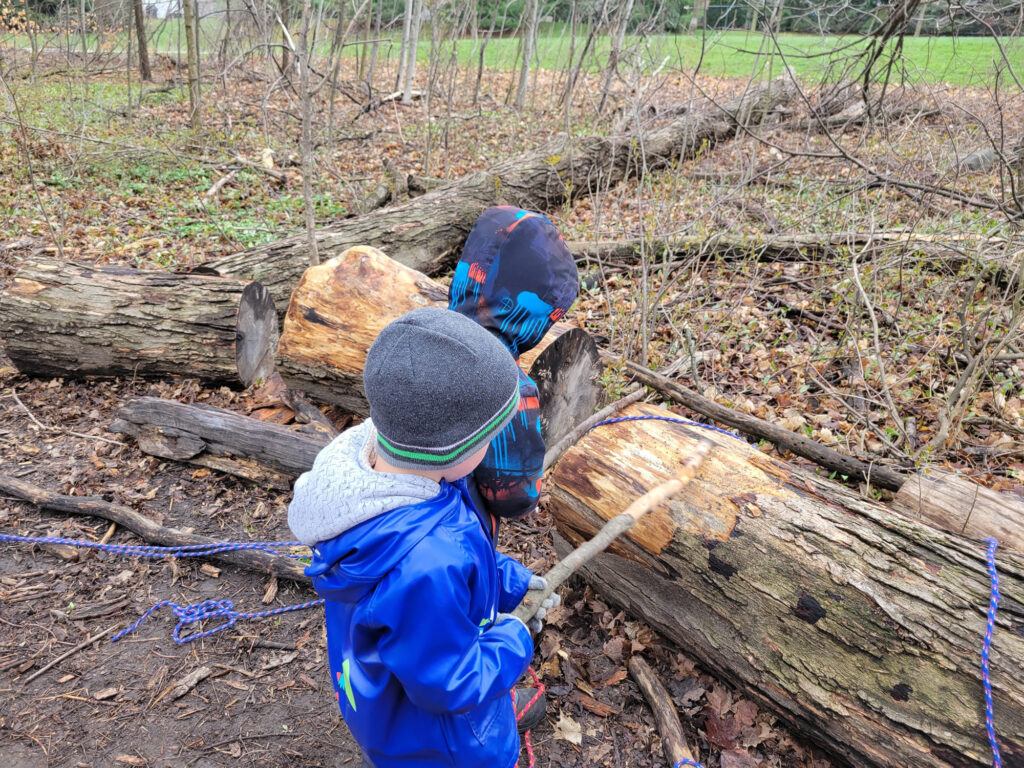
Branches have been turned into shelters for hiding, used as tools for reaching things our arms can’t, they’ve been the tracks and ramps of countless ball ramps and slides while we explore gravity and momentum, they are our obstacles in our home-made courses, our “owl’s nests” and “beaver dams” and they’ve offered us the opportunity to learn how to use a saw. I sat with the children that afternoon and told them what I was thinking about. About the many ways in which I have recognized their creativity, their work, their ingenuity. I also asked them to reflect on this. I asked them if they had ever noticed the ways in which we use sticks and branches in our play. Once they began listing what a stick or branch has been to them, they curated a list of close to thirty things within just a few moments. I recorded their list and, when I showed it to them, they were so excited to see their words about their work and they, themselves, were pleasantly surprised by the part these branches and sticks play in their learning journey.
I continued to observe the children and, when I considered the tree in this thinking, the tree after it is no longer living; beyond the stick wands and large balancing beam branches, it was impossible to forget the majestic trunks that we see holding the tree so tall around us in life in the forest. The children have woven the logs they have now come so familiar with into so much of their play, their curiosities and their growing respect for the natural world.
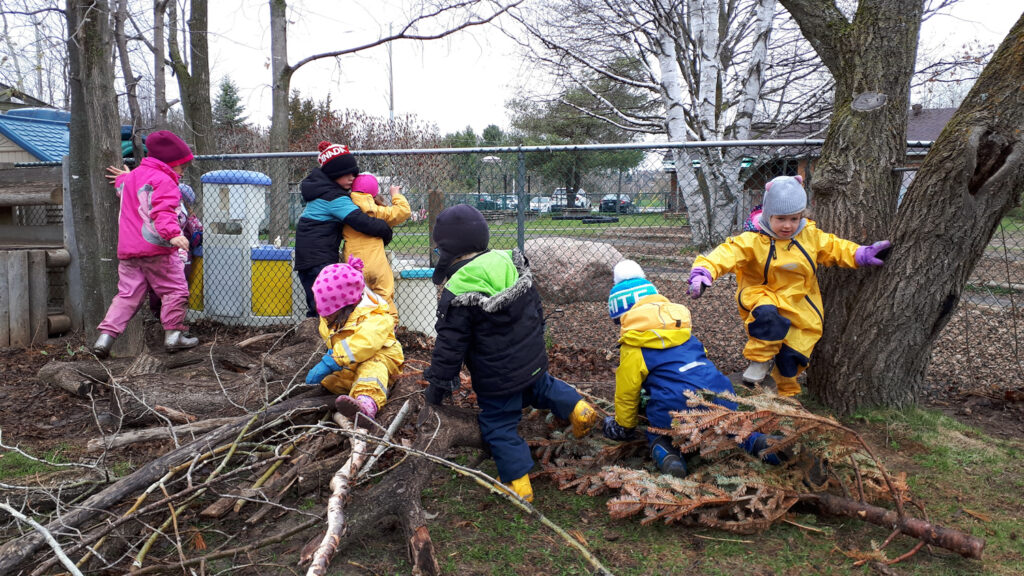
They see the log as being just as majestic on the ground as it was standing tall. Logs have brought us awareness about decomposition, recognition and respect for the tiny creatures that make homes within and under the logs and who rely on its bark to shelter them from the weather. Each log that these children have become intimate friends with has a purpose as some are used for moving, requiring teamwork, heavy work, “muscles” and plenty of engineering, while others encourage us to assess the risks of climbing and balancing. Others are platforms for jumping as high and as far as we can before measuring the distance against that of our friends or a quiet place to look for bugs as we gently lift them to see what resides below before “putting the roof back on” their homes and giving them space to live the way that is best for them. Finally, a seat, a place to be beside one another in our forest where we come together to say good morning to the forest, to eat our snack and to share our stories. That’s the use of the log that I don’t think we consider much at all. When we visit the living trees in the forest, we make use of the logs and place them together for sitting, that when placed together, these logs bring us together too.
Chelsa Osborne RECE, Forest School Practitioner

